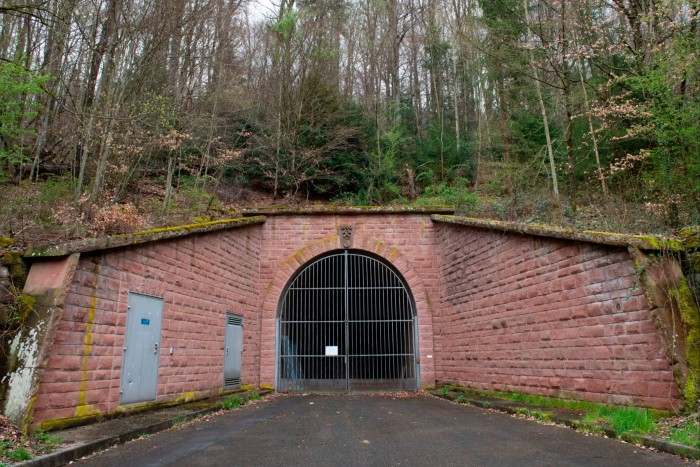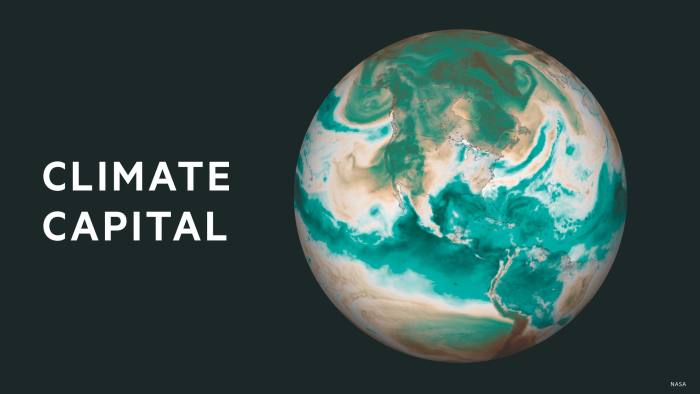The Käfersteige mine on the fringes of the Black Forest has lain dormant for 27 years, its rich mineral deposits abandoned, its gates locked and its tunnels immersed in floodwater.
Now those gates are about to reopen, as Germany seeks to reduce its dependence on imported critical minerals by extracting more of them itself.
“If we really want a revolution in transport and the resources needed for that, there’s no way around this project,” said Simon Bodensteiner, chief executive of Deutsche Flussspat, the German start-up planning to reactivate the mine. “And we are as good as ready to go.”
Käfersteige sits atop what is believed to be Europe’s largest deposit of fluorspar, a crucial component of electric cars. Every battery in a Volkswagen ID.4, the company’s first electric SUV, requires about 10kg of the mineral.
Germany currently imports large quantities of it from Mexico. The dream is of greater self-sufficiency, not only in fluorspar — often nicknamed “lithium’s little brother” — but other commodities the country needs for its green transition.

“We should use the potential we have and prove that green and sustainable mining is possible,” said Franziska Brantner, state secretary at the economy ministry, who is spearheading Berlin’s efforts to make its supply chains more resilient. “Historically speaking, Germany has always been a country that produces raw materials.”
Since the Covid-19 pandemic, western governments have been rushing to safeguard their economies from disruptions to trade, through everything from “friend-shoring” — moving supply chains to trusted countries — to outright decoupling from China.
Fears of an east-west conflict over Taiwan have only intensified the desire of the US and Europe to reduce their reliance on China for a host of critical materials. The EU, for example, depends on China for 72 per cent of its rare earth metals, a crucial component of computers, mobile phones and electric cars, according to Germany’s raw materials agency Dera.
Scarred by the turmoil caused by Russia’s suspension of gas exports to Europe after its full-scale invasion of Ukraine, business leaders say Germany must move quickly to avoid falling into the same trap with China.
“We are already more reliant on China for certain metals than we were on Russia for gas,” said Matthias Wachter of the BDI, Germany’s main business lobby. “And that’s a huge risk.”
Data compiled by Dera shows how dependent Germany and Europe have become on a small group of suppliers. In 2021, the EU received 96 per cent of its feldspar from Turkey, 98 per cent of its nickel oxide from Russia and 83 per cent of its gallium and germanium from China.

The market for fluorspar is also highly concentrated: only a small number of countries export it, and Europe’s domestic production covers just a third of its demand for the mineral, according to Bodensteiner. “Prices have steadily increased over the past 20 years as China reduced exports, existing mines became depleted and few new mines were opened,” he said.
Germany’s response has been to overhaul its raw materials strategy, with an eye to beefing up the role of the state in securing critical supplies. Brantner has been instrumental in drafting the strategy, an early version of which was released in January.
The paper says that the inadequate supply of critical materials such as lithium, copper and rare earths poses a “significant risk” to achieving global climate goals. It sees a possible solution in a public-private “raw materials fund” to support mining, processing and recycling projects in Germany and the EU with grants, loans and investment guarantees.
It also floats the ideas of increasing investment in recycling, creating a state stockpile of strategic raw materials and establishing “minerals security partnerships” with exporters such as Canada and Australia, as well as expanding domestic production.

The EU is also reassessing its approach. It has produced a Critical Raw Materials Act that will set quotas for domestic production of minerals and lower regulatory barriers for miners. Fluorspar is one of 34 commodities listed as critical.
The revival of Käfersteige, situated in a heavily wooded area near the town of Pforzheim, a jewellery and watchmaking centre in south-western Germany, epitomises the renewed interest in exploiting the country’s mineral wealth.
The mine first went into operation in 1935, at a time when fluorspar’s main use was in the metals industry: it lowers the melting temperature in steel and aluminium production and so improves energy efficiency.
But in the 1990s the industry fell into crisis. The market was flooded with a wave of Chinese-produced fluorspar that drove prices below the dollar-equivalent of €100 a tonne. Käfersteige’s then owner, Bayer, closed the mine in 1996.
Since then, prices have surged, rising to an all-time high of €700 per tonne in the summer of 2022 as demand for the mineral — used in solar modules and lithium-ion batteries — soared. (It has since fallen back to about €560 per tonne).

Projections by Deutsche Flussspat suggest EU demand for fluorspar concentrate could rise from 755,000 tonnes a year in 2020 to around 1.1mn tonnes by the end of the decade, if carmakers in the bloc use battery compounds sourced in Europe to achieve their CO₂ emissions targets.
Käfersteige, which is reported to contain about 2mn tonnes of raw fluorspar, could produce 100,000 tonnes a year after 2029, meeting 40 per cent of Germany’s demand and 13 per cent of the EU’s, according to Bodensteiner.
It is not the only new mining project in Germany. London-listed Zinnwald Lithium is planning to mine a huge lithium deposit on the German-Czech border in Saxony, while Vulcan Energy Resources aims to produce lithium from thermal water in Oberrheingraben, near Karlsruhe in south-west Germany.
Some experts think the focus on extracting raw materials is too narrow, however. “Mining alone is not enough,” said Siyamend Al Barazi, an expert at Dera. “We need to start thinking in complete value chains again, and that means processing as well as mining.”
It is an approach, he said, that underpins the US Inflation Reduction Act, which lavishes billions of dollars in subsidies on green technologies.
Yet business conditions in Germany — especially the high cost of electricity — are hardly conducive to large-scale investment. “If we can’t offer competitive energy prices for mineral processing, which is highly energy-intensive, then it’s going to be hard for Europe,” Al Barazi added.
Wachter, of the BDI, argued that some of the hype about a potential domestic boom in critical materials was overdone. “The idea that Germany can become self-sufficient is unrealistic,” he said. “But some of the raw materials we need can, indeed, be produced here. And that gives us a big advantage.”
The chart in this article has been amended since publication. It originally had two entries for Turkey’s Feldspar supplies.
Climate Capital

Where climate change meets business, markets and politics. Explore the FT’s coverage here.
Are you curious about the FT’s environmental sustainability commitments? Find out more about our science-based targets here
Stay connected with us on social media platform for instant update click here to join our Twitter, & Facebook
We are now on Telegram. Click here to join our channel (@TechiUpdate) and stay updated with the latest Technology headlines.
For all the latest Business News Click Here
For the latest news and updates, follow us on Google News.
